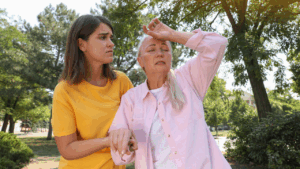The Influence of Seasonal Changes on Mental Health
As the seasons shift, so does our mental well-being, although the correlation may not always be immediately apparent. Seasonal changes can have a profound impact on our emotional state, affecting how we feel, act, and cope with stress. This phenomenon has been recognized in psychological studies, but its intricacies and subtleties make it an evolving subject of research. Let’s delve into the complex relationship between seasonal changes and mental health, exploring disorders like Seasonal Affective Disorder (SAD), potential remedies, and what you can do to stay mentally robust year-round.
The Science Behind Seasonal Impact
The Biological Clock
Our internal biological clock, or circadian rhythm, tends to adjust with the changing amounts of daylight. This can disrupt our sleep patterns, hormone release, and even mood, contributing to seasonal mental health variations.
Serotonin and Melatonin
Two neurotransmitters heavily involved in mood regulation—serotonin and melatonin—also respond to changes in light exposure. Reduced sunlight can lead to decreased serotonin levels, potentially resulting in feelings of depression.
Identifying Seasonal Affective Disorder (SAD)
Not everyone who feels down during winter or restless during summer has Seasonal Affective Disorder. However, it’s a condition worth understanding for its illuminating example of how closely tied our mental health is to the environment.
Symptoms
When it comes to identifying the symptoms of Seasonal Affective Disorder (SAD), it’s important to recognize that they can manifest in various ways that profoundly impact daily life. One of the most common signs is a noticeable shift in energy levels, often manifesting as fatigue and sleep issues. People with Seasonal Affective Disorder may find themselves struggling to get out of bed in the morning or, conversely, facing insomnia during the night.
Alongside sleep disturbances, there’s often a change in appetite and, consequently, fluctuations in weight. Some individuals experience a significant weight gain due to an increased craving for carbohydrates, while others may lose weight because of a decreased appetite or a general disinterest in food.
Cognitive abilities can also take a hit. Difficulty concentrating is another hallmark symptom, affecting performance at work or school. Tasks that once seemed easy or routine can suddenly feel overwhelming, leading to a decrease in productivity and an increase in stress.
Moreover, there’s usually a loss of interest in activities that were once enjoyable. Hobbies and social events that were once the highlight of one’s day may now feel like a chore. This loss of interest extends into social dynamics as well, resulting in social withdrawal. A person with SAD might avoid gatherings, ignore calls, or even distance themselves from loved ones, further deepening their sense of isolation.
Risk Factors
When evaluating who is most at risk for developing Seasonal Affective Disorder, it’s important to note that while SAD can affect anyone, several key factors can heighten susceptibility. One of the most pronounced risk factors is gender. Women are significantly more likely to receive a diagnosis of Seasonal Affective Disorder than men. While the reasons for this disparity are still under investigation, hormonal differences that affect mood could be a contributing factor.
Geographic location also plays a role. Those residing farther from the equator are more likely to experience SAD, owing to the more drastic changes in sunlight and shorter days during the winter months. Reduced exposure to natural light can disrupt your internal body clock and lead to symptoms of SAD.
Additionally, age is an important risk factor to consider. While older adults can certainly experience SAD, younger adults and even teenagers have a higher risk of developing the disorder. The reasons for this aren’t entirely clear but could be related to the many life transitions and stressors that younger people face, which may amplify the symptoms of SAD.
Last but not least, family history cannot be ignored. If you have a family background that includes depression or other mental health disorders, your risk of developing SAD increases. The genetic component, combined with environmental factors like stress and lifestyle, can make certain individuals more prone to experiencing this seasonal ailment.
Coping Mechanisms and Treatments
Light Therapy
One of the most recommended treatments for SAD is light therapy, also known as phototherapy. It involves exposure to a bright light within the first hour of waking up for about 20-30 minutes.
Physical Exercise
Regular physical activity releases endorphins, acting as a natural mood booster. Exercise is especially beneficial when done outdoors, combining the benefits of sunlight and movement.
Medication and Counseling
Antidepressants and psychotherapy are other avenues of treatment, often used in conjunction with other methods. Always consult a mental health therapist for a tailored treatment plan.
Self-Care Tips for Seasonal Mental Health
- Stay Active: Even light activities can make a big difference
- Eat Balanced Meals: Proper nutrition affects both your physical and mental state
- Stay Social: Social support is crucial when you’re feeling down
Conclusion
Understanding the influence of seasonal changes on mental health is the first step towards a happier, healthier you. While it’s common to feel the seasonal “blues,” prolonged or severe symptoms should not be ignored. If you or someone you know struggles with seasonal changes affecting mental health, don’t hesitate to seek professional advice. Treatment is available, and it’s never too late to improve your mental well-being.



